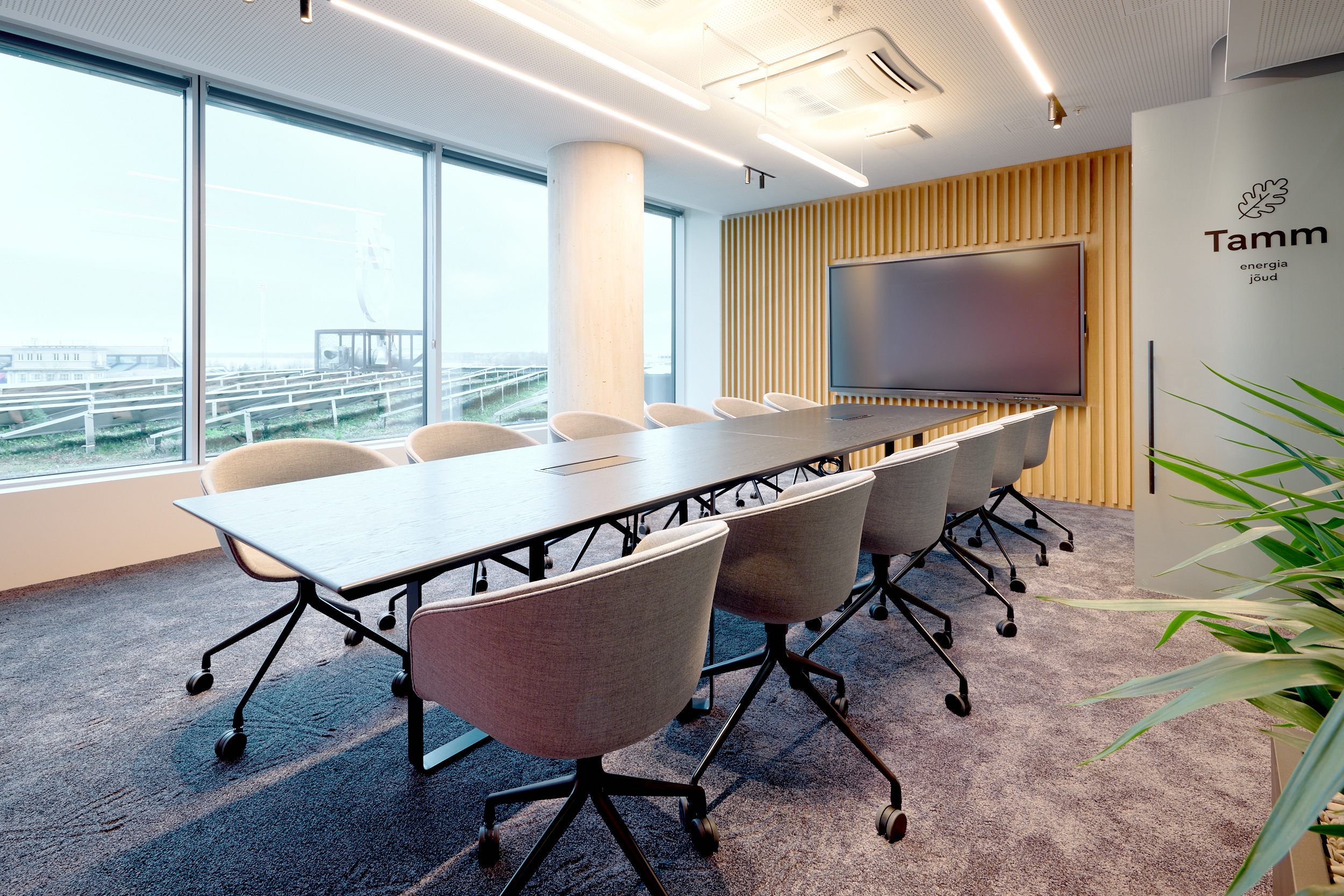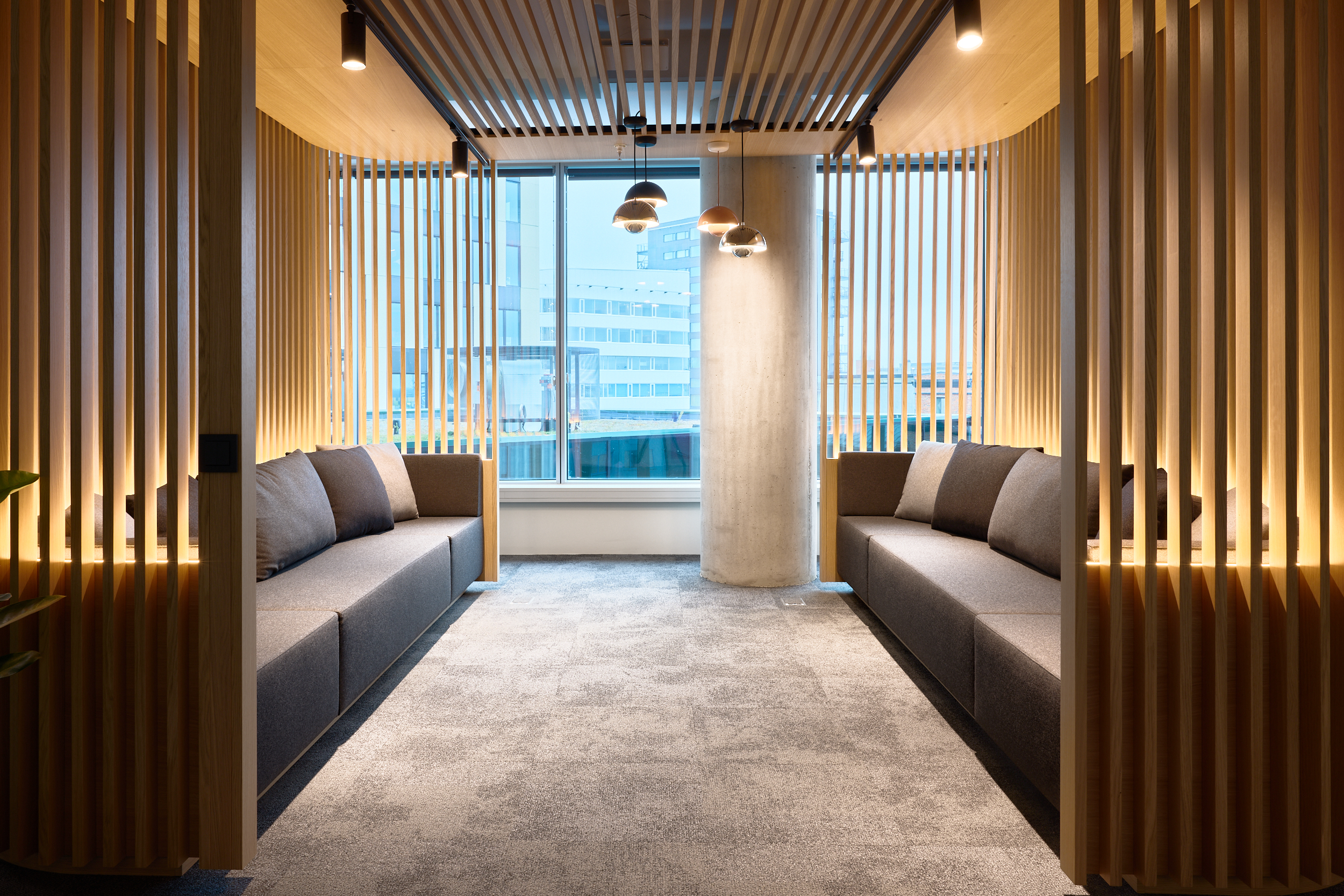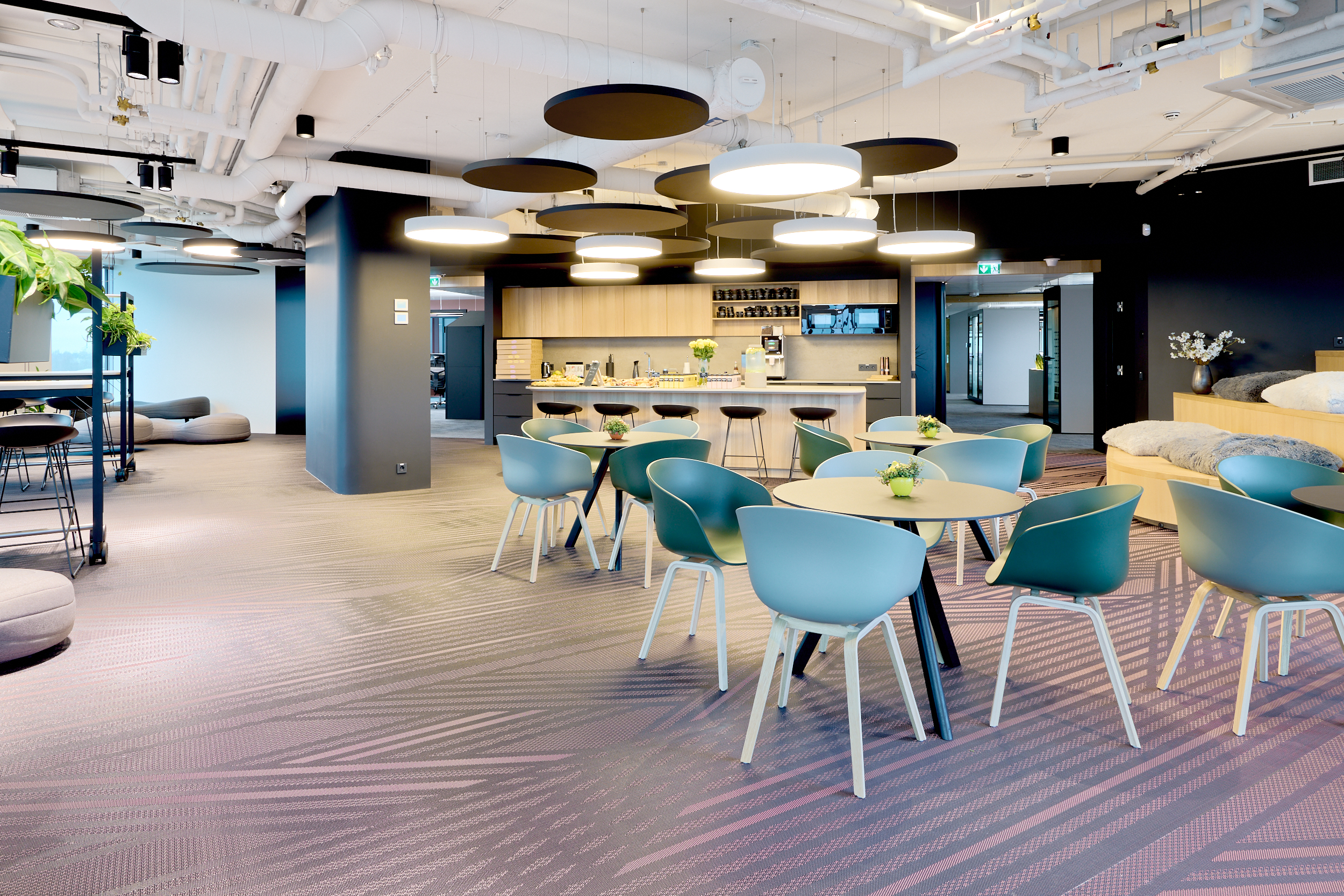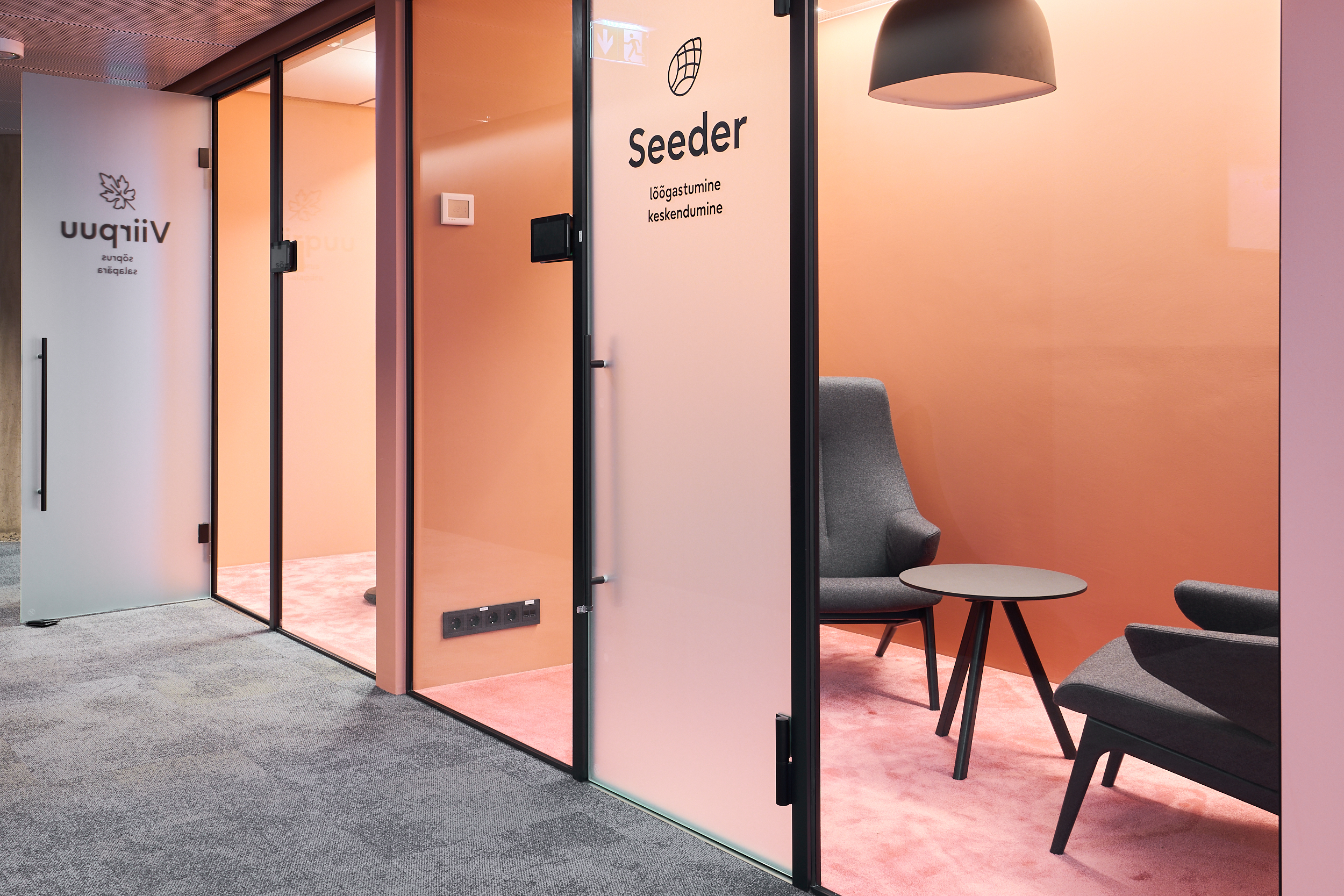Fujitsu Property and Workplace Standards Manager Olly Dickinson: The Tallinn office is the most exciting project of the last seven years!
Along with other cool and innovative companies, the information and communication technology equipment and services company Fujitsu also moved into the recently completed Alma Tominga business building. The company got a truly unique office, which was completed in cooperation with Katrin Kaevats, interior architect of PIN Arhitektid and OCCO.
The most exciting project of recent times
Located in Ülemiste City, Tallinn’s most innovative district, the Fujitsu office is the company’s newest. Before that, workspaces were completed in Helsinki, Paris and London. According to Olly Dickinson, head of real estate and workplace standards at Fujitsu, the Tallinn office is the most exciting project of the last seven years. “Each new office is one gram more awesome than the others, and since the one in Tallinn is one of the last, it is also one of the best,” said Dickinson.
Nearly 250 people will work in the new office. “The main purpose of the office is to bring employees together – everyone also has the opportunity to work from home, but we consider face-to-face meetings and communication very important,” said Dickinson.

An office that looks like Fujitsu
“When creating the interior design concept, we primarily based the Fujitsu brand as a primer. It was important for us to create an office that would look like Fujitsu,” said Katrin Kaevats, the author of the interior architecture project and interior architect of PIN Arhitektid. “At the same time, we wanted to do something different and introduce new shades and solutions that would make the new office in Tallinn unique and distinctive,” she described.
Fujitsu gave the interior architect examples from previous offices and also pointed out the elements that should be used. “We changed this concept somewhat, introducing more contrast and a stronger approach to Fujitsu’s branding concept. We hit the spot at the start and captured the right feeling,” said Kaevats. “We were able to maintain Fujitsu-ness in a new way.”
“We used perforated sheet metal as a new material, and to create contrast we added several black details to the interior,” described Kaevats. Until now, Fujitsu’s offices have been calmly and evenly pastel, with gentle shades of tones, without major contrasts. The new office has several larger volumes in black and small details – window and door frames, links, lighting, etc. “Contrast brings a lot of new energy,” said Kaevats.
The interior designer’s own favorite elements are hanging soft seats and an open “nest / hub” with hidden light, surrounded by wooden latticework, into which a comfortable sofa is built.

Lighting also plays an important role: “In the rooms, there is not uniformly bright workplace light, but different lighting solutions have been created,” explained Kaevats. For example, hidden lights, cornice light, cozy pendant lights were used, which would create a diverse atmosphere. “The whole atmosphere is very bright and warm,” said Kaevats.
Both in the toilets and at the desk, the lamps work with motion sensors. When you approach the table, the lamp lights up by itself and goes off automatically within an hour. Apart from the lighting, the toilet flushing system is also automated, which is also based on sensors.
Special attention is paid to sustainability in the new office: the rooms are decorated with several plants, you can use tap water to quench your thirst, a large part of the furniture is made of recycled materials, and in addition, the Tallinn office is the first where writing paper is not used. As a good practice, all employees are also expected to sort garbage, and for this they will use Longopac’s environmentally friendly garbage bags to ensure that only the minimum amount of bags is used.

OCCO did a great job
OCCO took care of furnishing the Fujitsu office: “When we had finished our concept, OCCO came to our aid – they took over the management of the project in terms of furnishings,” said Kaevats. “OCCO’s solution was very good for us, because we used a lot of special solutions for furniture and we also wanted to see working drawings. We received the drawings from OCCO’s partner, reviewed them, gave feedback, and then the furniture went to order.”
According to Kaevats, OCCO is a convenient link between the customer, furniture manufacturers and interior architects, and thanks to them, everyone’s work is significantly smoother. “Ordering the furniture, communicating and mediating the details discussion with the manufacturer, as well as managing the entire order for the customer is the work that OCCO was responsible for.”
“OCCO is a partner who understands what we need – they immediately understood our way of thinking, plans and goals,” said Dickinson. “They were partners who thought along with us at every stage – that’s why a good synergy was created,” said Dickinson.

What do modern offices look like?
According to Kaevats, companies today are quite bold when it comes to furnishing offices. “Rather, what is desired is distinctive, not so conventional, solutions. It certainly depends a lot on the needs of the company – how many employees there are and for whom the office is being built.” It is one thing if an office is created for one’s own employees, but another approach is taken if the premises are intended as a model office that should attract talent. “Companies are open to special solutions and want to get something unique,” said Kaevats.
The latest trend in office furnishings is that not every employee can have their own personal workplace in the office. The reason for this is the fact that many people want to work from home, and it does not make sense for everyone to have an empty table and chair waiting. The use of multifunctional furniture is also common, where you can work, rest or hold a meeting. For example, an acoustic couch with power outlets. If necessary, you can rest there and ponder your thoughts. At the same time, you can also plug in your laptop at any time and work.
According to Kaevats, recently a lot of emphasis is also placed on the comfort of employees – employees are provided with pleasant rest areas and opportunities to spend free time in the office as well. “Companies do everything to make people want to come to work and not leave immediately after the end of the working day,” explained Kaevats.
Our news
See all news
January 16, 2023
What makes start-up offices so special that employees enjoy spending time there even after the end of the working day?
January 9, 2023
kood/Jõhvi coding school co-director Karin Künnapas: anyone can write code with enough motivation and interest
December 20, 2022
Office from the future: The new space for Ogre looks like an office from the 2030s
December 7, 2022
Sauna, massage chair and a library: the brand new office of Skeleton Technologies makes you want to live there
October 24, 2022
The founders of PickTwo: OCCO has a solution to one of the most important problems for interior architects
October 18, 2022